
Caithness is a historic county, registration county and lieutenancy area of Scotland.

Dunnet Head is a peninsula in Caithness, on the north coast of Scotland. Dunnet Head includes the most northerly point of both mainland Scotland and the island of Great Britain.
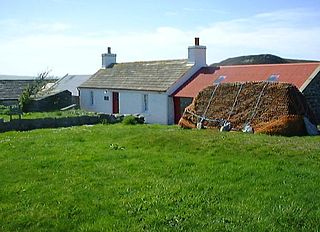
Dunnet is a village in Caithness, in the Highland area of Scotland. It is within the Parish of Dunnet.

Tarbat is a civil parish in Highland, Scotland, in the north-east corner of Ross and Cromarty.
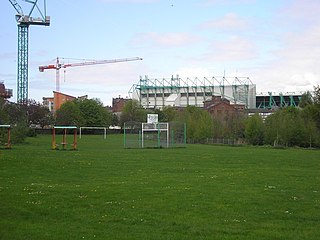
Lochend is a mainly residential suburb of Edinburgh, the capital of Scotland. It is named after Lochend Castle and the adjacent Lochend Loch, located in the western part of Restalrig on the boundary between Leith and The Canongate, approximately two miles from Edinburgh city centre. The suburb consists largely of a 1930s public housing estate, and is bounded on the west by Easter Road.

Faslane Castle and Shandon Castle were two mediaeval Scottish castles which once stood between the village of Garelochhead and the town of Helensburgh, near the shores of the Gareloch, in Argyll and Bute. In the 19th century, the castles were thought to have dated back to the Middle Ages. At that time period, they were situated in within the mormaerdom of Lennox, which was controlled by the mormaers of Lennox. Today nothing remains of Faslane Castle; though in the 19th century certain ruins of Shandon Castle were said to have still existed. Near the site of Faslane Castle sits the ruinous St Michael's Chapel, which has also been thought to date to the Middle Ages.
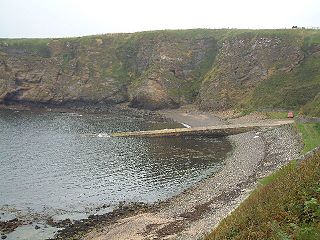
Brough is a small village in Caithness in the North of Scotland. It is located on the B855 single-track road, the most northerly numbered road on the mainland of Great Britain, and is a few miles to the south east of Dunnet Head, the most northerly point on the British mainland, and a mile or so north of the village of Dunnet. It lies in the civil parish of Dunnet. Brough is the site of Brough Castle, a twelfth Century Norse fortress; the ruins are on the property now known as Heathcliff. Brough is the most northerly village on the British mainland.
Old Luce is a civil parish in Dumfries and Galloway, Scotland. It lies in the Machars peninsula, in the traditional county of Wigtownshire. The parish is around 10 miles (16 km) long and 8 miles (13 km) broad, and contains 40,350 acres (16,330 ha).

Yarrow is a place and parish in the Scottish Borders area of Scotland and in the former county of Selkirkshire.The name "Yarrow" may derive from the Celtic word garw meaning "rough" or possibly share a derivation with the English name "Jarrow".
Moonzie is a small parish in Fife, Scotland, about 3 miles north-west of Cupar. It is bounded on the west by Creich, on the north by Kilmany, on the south-east by Cupar and on the south-west by Monimail.

Abdie is a parish in north-west Fife, Scotland, lying on the south shore of the Firth of Tay on the eastern outskirts of Newburgh, extending about 3 miles eastwards to the boundary of Dunbog parish, with which it is now united ecclesiastically and for the Community Council. It is also bounded by Collessie on the south and has a small border with the parish of Moonzie in the south-east.

Kirkurd is a parish in Peeblesshire in the Scottish Borders situated 3 miles south-east of Dolphinton and 6 miles north-east of Broughton. Tarth Water, a tributary of Lyne Water forms the northern boundary, with the parishes of Linton and Newlands on the north bank. The parish of Stobo lies to the east and south, the parish of Broughton, Glenholm and Kilbucho to the south, Skirling and Dolphinton (Lanarkshire) to the east.
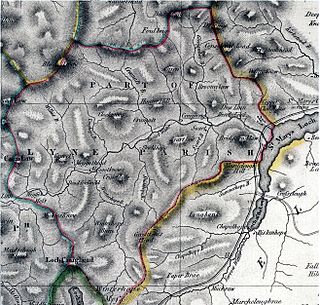
Megget is a former chapelry or parish containing the valley of Megget Water, now forming the westernmost part of the parish of Yarrow, Selkirkshire in the Scottish Borders area of Scotland. The centre of the valley is 19 miles west of Selkirk.

Skirling is a parish, community council area and village in Peeblesshire in the Scottish Borders situated 2+1⁄2 miles east of Biggar in Lanarkshire. Biggar Water, a tributary the River Tweed forms the southern boundary of the parish with the parish of Broughton, Glenholm and Kilbucho. It is also bounded by that parish on the east, namely the Broughton part of it. On the north it is bounded by the parish Kirkurd in Peeblesshire. Spittal Burn forms most of its western boundary with Lanarkshire.
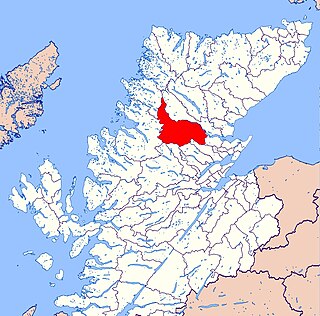
Kincardine is an extensive civil parish and Community council area on the south side of the Kyle of Sutherland, within the Highland unitary authority area of Scotland, the largest settlement being Ardgay.
Kildonan is a parish in Sutherland, Scotland. It is located in the east next to the boundary with Caithness. It has a coast line of about 5 miles, but extends about 25 miles inland. Its main settlement is Helmsdale.

Loch More is a 4 miles (6.4 km) long freshwater loch in Sutherland, Scotland, about 10 miles east of Scourie. It is part of a series of inter-connecting lochs and rivers that empty into Loch Laxford, which is a sea loch, the "ford" in the name meaning a firth not a ford This drainage area, named the Laxford basin, lies in the southern part of the civil parish of Eddrachillis.
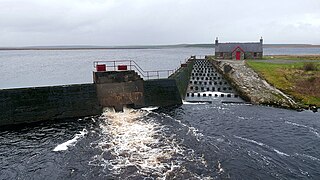
Loch More is a freshwater loch in Caithness, Scotland, about 14 miles south of Thurso.. It is a shallow flat-bottomed basin, in common with most of the nearby lochs.

Loch Heilen is a loch in the civil parish of Dunnet in Caithness, Scotland. St. John's Loch and Loch Heilen are the two largest lochs in the parish. It is about two miles inland from Dunnet Bay to the west, which is on the north coast of Scotland. The town of Thurso is about eight miles to the west.

Torosay is a civil parish on the Isle of Mull in the county of Argyll, Scotland, part of the Argyll and Bute council area. It is one of three parishes on the island and extends over the central and south-eastern part. It is bordered by the parish of Kilninian and Kilmore in the north and Kilfinichen and Kilvickeon in the south-west. It extends about 12 miles east-west and 10 miles north-south. On the north-east coast it is separated from the mainland by the Sound of Mull. On its south-east coast, part of it is almost severed from the rest of the parish by the sea lochs Spelve and Buie, together with the freshwater loch Uisg, in between. This peninsula, which includes the hamlet of Croggan, is joined to the main island by a small isthmus at Kinlochspelvie and another at the settlement of Lochbuie. There is a smaller sea loch Loch Don, which gives its name to the hamlet of Lochdon. Further north, there is a bay at Craignure which is the location of a ferry port.


















